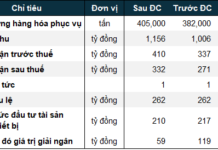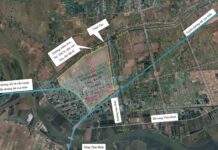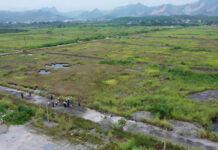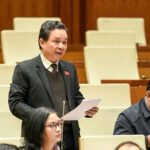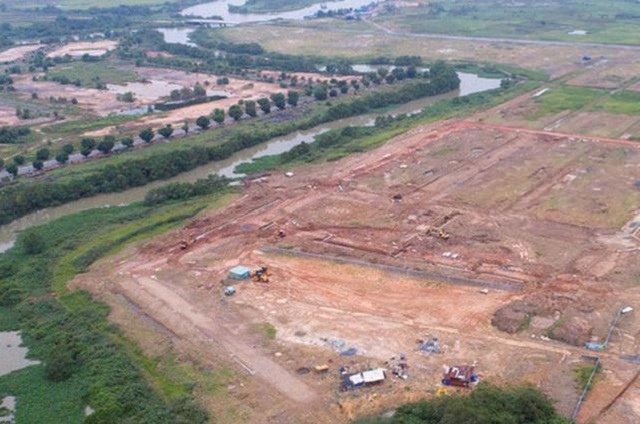
Illustrative image
|
Granting land-use rights and ownership certificates for residential land and assets attached to the land for households and individuals as specified in Clause 1 and Clause 3, Article 139 of the Land Law.
For those who are using the land and owning assets attached to the land through land encroachment or occupation, or using the land for purposes other than those specified in the land allocation, lease, or recognition of land-use rights before July 1, 2014, the granting of land-use rights and ownership certificates for residential land and assets attached to the land shall be conducted as follows:
|
Clause 1, Article 139 of the Land Law Handling of land use by households and individuals in violation of land laws before July 1, 2014 1. In cases of land encroachment or occupation of safety corridors of public works after the State has announced and demarcated such corridors, or encroachment or occupation of roads, pavements, or sidewalks after the State has announced the construction boundaries, or land encroachment or occupation for the purpose of constructing offices, public works, or other public facilities, the State shall reclaim the land to return it to the respective works without granting land-use rights and ownership certificates for the encroached or occupied land area. If there have been adjustments to the approved land use or construction planning by competent authorities, and the encroached or occupied land area is no longer part of the safety corridors of public works, road construction boundaries, or designated for office, public works, or other public facilities, the current land users shall be considered for the granting of land-use rights and ownership certificates and must fulfill financial obligations as prescribed by law. |
1. For land that has been in use before October 15, 1993, and at the time of granting land-use rights and ownership certificates, there are residential houses or constructions serving life needs on the land, the recognized residential land area shall be the land use quota prescribed from December 18, 1980, to before October 15, 1993, provided that the land lot area is equal to or larger than the recognized land use quota.
If the area of land on which residential houses or constructions serving life needs have been built is larger than the recognized residential land area as prescribed in this Clause, the actual area of land on which the constructions have been built shall be recognized.
If the land lot area is smaller than the recognized land use quota prescribed in this Clause, the recognized residential land area shall be the entire land lot area.
2. For land that has been in use from October 15, 1993, to before July 1, 2014, and at the time of granting land-use rights and ownership certificates, there are residential houses or constructions serving life needs on the land, if the land lot area is equal to or larger than the prescribed land allocation quota, the recognized residential land area shall be the land allocation quota.
If the area of land on which residential houses or constructions serving life needs have been built is larger than the land allocation quota, the actual area of land on which the constructions have been built shall be recognized.
If the land lot area is smaller than the land allocation quota, the recognized residential land area shall be the entire land lot area.
|
Clause 3, Article 139 of the Land Law 3. For households and individuals who are encroaching or occupying land, not falling under the cases prescribed in Clause 1 and Clause 2 (Cases of land encroachment or occupation with the source from agricultural or forestry land that has been allocated by the State without land use levy payment to objects through different periods) of this Article, and cases of using land for purposes other than those prescribed in the land allocation, lease, or recognition of land-use rights, the following regulations shall be applied: a) If the current land user has stable land use and such use is consistent with the district-level land use planning or the general planning or the subdivision planning or the construction planning or the rural planning, they shall be considered for the granting of land-use rights and ownership certificates and must fulfill financial obligations as prescribed by law; b) If the current land user does not meet the conditions prescribed at Point a of this Clause, they shall be allowed to temporarily use the land until the State retrieves the land, but they must maintain the current status of land use and must declare land registration as prescribed. |
3. For the remaining land area (if any) after the determination as prescribed in (1) and (2) above, the recognition shall be based on the current land use status.
If the current land use status is agricultural land, it shall be recognized as land allocated by the State without land use levy payment; if the land user wishes to have it recognized for non-agricultural purposes and such purposes are consistent with the district-level land use planning or the general planning or the subdivision planning or the construction planning or the rural planning, it shall be recognized for such purposes, and the land user must pay land use levy as prescribed by law.
If the current land use status is non-agricultural land other than residential land, it shall be recognized as prescribed in (4) below.
4. If, at the time of granting land-use rights and ownership certificates, the land lot is being used for production, business, non-agricultural, commercial, or service purposes, the recognized land area shall be the actual area of land in use for the construction of non-agricultural production facilities, commercial or service facilities; the recognized form of land use shall be the form of land allocation with land use levy payment, and the duration of land use shall be stable and long-term.
5. Households and individuals who are stably using land for agricultural production purposes with the source from land encroachment or occupation, and now are certified by the People’s Committees of communes where the land is located to have no land use dispute, shall be granted land-use rights and ownership certificates for the land area they are using but not exceeding the land allocation quota prescribed by the Provincial People’s Committees according to Clause 4, Article 139 of the Land Law; if exceeding the quota, the excess area must be leased from the State.
6. For households and individuals who are using land for purposes other than those prescribed in the land allocation, lease, or recognition of land-use rights, and such use is consistent with the district-level land use planning or the general planning or the subdivision planning or the construction planning or the rural planning that has been approved by competent authorities, the following regulations shall be applied:
a) If land-use rights and ownership certificates have not been granted, the granting of such certificates for the first time shall be conducted according to the regulations in Clause 1, Article 28, Article 31, and Article 36 of this Decree;
b) If land-use rights and ownership certificates have been granted, the registration of land-use rights and ownership changes shall be conducted according to the regulations in Article 29 and Article 37 of this Decree;
c) Land users must fulfill financial obligations for the area of land that has been converted for use purposes other than those prescribed by law at the time of submitting the registration or granting of land-use rights and ownership certificates.
Decree No. 101/2024/ND-CP takes effect on August 1, 2024.












